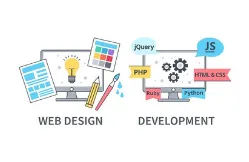Selenium WebDriver for Cross-Browser Testing
Selenium is a common framework for automation testing which is used mainly for cross-browser testing. It is open source and is suitable for automating web application testing through numerous browsers, including Firefox, Chrome, Microsoft Edge, and Internet Explorer.
Selenium has become a well-known system and is giving other test frameworks such as HP QTP (Quick Test Professional) and AKA HP UFTT stiff competition (Unified Functional Testing). This Selenium WebDriver blog will help you gain a basic understanding of the Selenium suite components, the Selenium WebDriver architecture, and show you how to run a cross-browser compatibility website automation test using Selenium WebDriver for Google Chrome, Mozilla Firefox, and Internet Explorer.
Selenium is a mixture of various devices, and in automating web testing, each method plays a critical role.
Components of the Selenium Suite
Below are the core components of the Selenium Test Suite:
- Selenium Integrated Development Environment (IDE)
- Selenium Remote Control (RC)
- Selenium WebDriver
- Selenium Grid
Selenium Integrated Development Environment (IDE)
Selenium IDE is a simple plugin for Firefox and is used for capturing and playing back scripts. The Selenium IDE, however, can be used only to write automation scripts to automate the testing of basic use cases. Selenium IDE does not accept conditional statements, handling of exceptions, loops, capturing of screenshots, etc. A majority of developers and testers tend to opt for scripting testing instead of Record & Replay testing to automate complex use cases. The Selenium test suite consists of the Selenium WebDriver or Selenium Remote Control (RC).
The Selenium IDE is available for various operating systems, such as Windows, Linux, Mac OS, etc.
Selenium Remote Control (RC)
Selenium Remote Control (RC) can be used for testing complex scenarios. It is based on a client-server model that allows tests to be conducted on a server-controlled browser. In various programming languages, there are client libraries that make it easy for developers to write efficient test cases in a programming language where they are comfortable and have expertise. RC has supported Java, C#, Python, Perl, Ruby, etc. since version 2.25.0
Selenium Server is the Selenium RC's core portion. Below are some of the Selenium RC's core features/responsibilities:
- The client program sends commands to the RC that are then interpreted and sent to the browser by the server.
- The findings are sent back to the client after execution.
- Client & Server interact through the usual HTTP GETS and POSTs process.
As mentioned earlier, the Selenium RC supports different browsers, unlike Selenium IDE which is only available for Mozilla Firefox. The downside of Selenium RC is that it does not support record & playback functionality, which can be vital in the automation of test cases where tasks are repetitive, especially for regression testing.
Before executing the tests using Selenium RC, an instance of the Selenium RC Server should be manually invoked and that instance should be running throughout your entire test cycle.
Selenium WebDriver
We know that the Interface is based on Selenium IDE, where Selenium RC is a standalone Java program that allows you to run HTML test suites. When opposed to Selenium IDE & Selenium RC, the Selenium WebDriver system is more commonly used. Selenium WebDriver architecture is implemented via a device-specific driver, unlike Selenium RC, which is based on the client-server model, e.g., each browser would have its corresponding WebDriver application on which the automation testing will take place.
Selenium WebDriver interacts directly with the browser, so no separate component, such as Selenium Server, is needed. This supports top programming languages such as C#, Ruby, Java, Python, Perl, etc. that are helpful for a software tester.
Selenium Grid
When testing code that is limited to a few browsers, operating systems, or computers, serial testing is perfect. However, if the research has to be conducted in a setting that has many variations, the technique falters. This is where parallel testing, as it can speed up the whole testing process, can be incredibly useful. Parallel testing will allow you to conduct a similar test case simultaneously across various test configurations. You may also run numerous test cases in the same browser simultaneously. Parallel testing has much more to do, but that can deviate our attention from Selenium WebDriver.
Back to basics: Selenium Grid is primarily used for parallel testing because it helps simultaneously run experiments on multiple machines against different browsers & operating systems. In combination with Selenium RC, it does the job.







